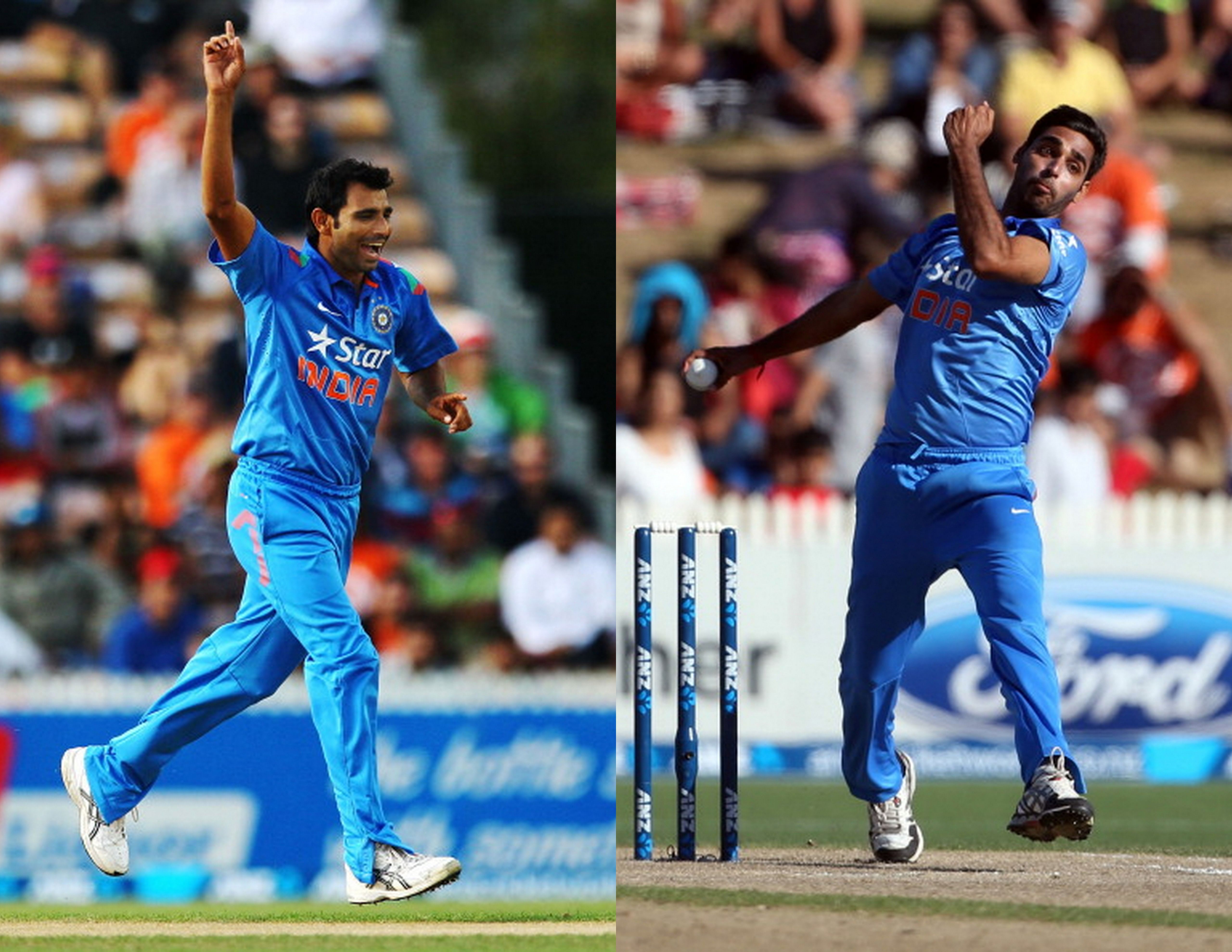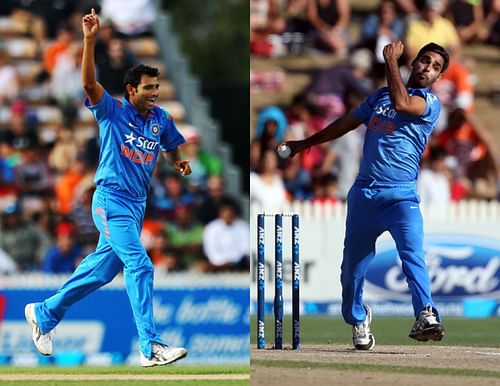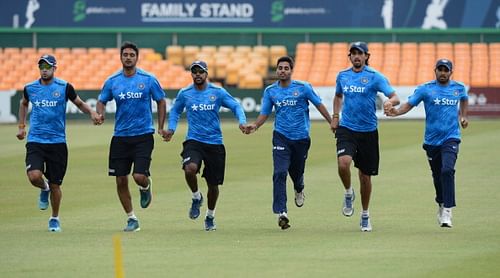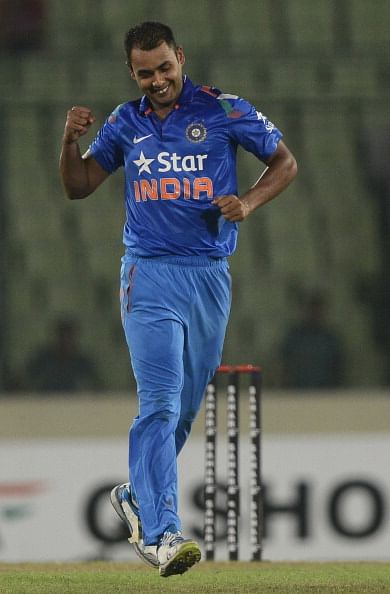
India tour of England 2014: SWOT analysis of Indian bowling

No, nothing was okay about the Indian bowling during their tour of England in 2011. The glaring absence of bite in the attack was shamelessly flaunted, and the desperate need for a pacer with the slightest hint of menace was openly advertised.
Fast forward to 2014 – a few things have changed. Harbhajan Singh’s international career is all but over. Zaheer Khan faces yet another roadblock. Sreesanth has been banned for life. Munaf Patel and Praveen Kumar have faded away into oblivion.
Instead, the bowling line up comprises of Ishant Sharma (the lone survivor of the 2011 nightmare), Bhuvneshwar Kumar, Mohammad Shami, Varun Aaron, R Ashwin, Ravindra Jadeja, and the uncapped trio of Stuart Binny, Ishwar Pandey and Pankaj Singh. The lineup inspired no confidence in Dilip Vengsarkar, who minced no words when he said that he doesn’t see them capable of taking twenty wickets in a match.
As part of the build-up to the highly awaited series, a SWOT analysis of the Indian bowling attack follows.
Strengths
Still in the infant stages of his international career, Bhuvneshwar Kumar has already managed to swing his way into some record books, and has succeeded in giving some of the world’s leading batsmen sleepless nights. His ability to effortlessly swing the ball both ways has made him a deadly weapon in Dhoni’s artillery, and it is highly likely that he would be the most discussed Indian bowler in the English team meetings.
Mohammed Shami, too, in his short career in the longest format, has had his fair share of success. Despite his inexperience, he seems to have a mature head on his shoulders. Shami bowled a menacing spell of 10-0-30-3 in Auckland in the 1st Test in New Zealand, and the conditions in England aren’t expected to be too dissimilar to that of the Kiwi land. The Bengal pacer would take confidence from his recent exploits, and his effectiveness with both the new and old ball makes him a genuine threat to the English batsmen.

Weaknesses
With Zaheer Khan out of the selectors’ radar, the Indian bowling line up reeks of inexperience. The erratic Ishant Sharma has done precious little to repay the selectors’ faith, and it’s never a good sign when your bowling attack is led by a perennial underperformer whose place in the eleven is under constant scrutiny.
“Stumps splayed in the ground might look a more comprehensive mode of dismissal, but helpless jabbing at a bouncer aimed at the body looks like total surrender”, Sambit Bal once wrote. And the Indian bowling line-up doesn’t have a single bowler capable of scaring the opposition, let alone roughing a batsman up. With Umesh Yadav dropped, Aaron is India’s fastest pacer – his general speed of 135 kmph won’t cause Cook and Co. any nightmares.
Bhuvneshwar Kumar’s repeated failures with the old ball may prove expensive, and the lack of a genuine quick may affect India’s chances. Also, English pitches offer little or no assistance to spinners. Despite Ashwin and Jadeja being India’s better performers over the last couple of years, it’s highly unlikely that Dhoni will play both of them in the eleven.
Opportunities

an opportunity of a lifetime
Stuart Binny would be eager to prove his mettle. Over the last few weeks, he’s been stung by constant criticism over his selection in the squad, and he would be desperate to prove his detractors wrong. Also, Sanjay Bangar and Sourav Ganguly’s bowling exploits in England have proven that conditions there are helpful to an accurate medium pacer with a natural ability to swing it. Binny, without doubt, is a better all-rounder than Bangar, and his recent performances in Bangladesh would boost his confidence to a great extent.
Varun Aaron needs to transform his reputation of being an unreliable and inaccurate pacer to someone his skipper can actually turn to in crunch situations. The English conditions are conducive to bowlers who bowl with a disciplined line and length, and Aaron, Ishwar Pandey and Pankaj Singh, if given opportunities, could not ask for a better tour to make their mark in the international circuit.
Also, barring Ishant, none of the bowlers go into the series bearing mental scars from the catastrophic tour in 2011. Sometimes, a fresh mind can do wonders to the overall morale of the team.
Threats
Indian bowlers have an infamous history of violently imploding. On such days of collective failure, uncontrollably leaky faucets are put to shame by the rate at which the bowlers donate runs. Dhoni has had to defend his bowlers in embarrassing press conferences more often than he would like to, and this kind of dramatic indiscipline from the bowlers could pose a serious threat to India’s bid to regain their lost pride in England.
English summers have often ended with India returning home battered and bruised. Experience is vital. With Ishant being the only bowler to have played Test cricket in England, the Indians face a massive challenge to get acclimatized to the conditions, given that they have only two practice games before the start of the first Test.
Verdict
If the Indian bowlers bowl to their strengths and effectively utilize their potential, they are more than capable of rolling over the under-confident English batting order, who struggled in the recent series against the Sri Lankans. However, considering the proven inconsistency of the bowlers, and by glancing at India’s past performances in England, I am not too convinced that they can bowl out the opposition twice.